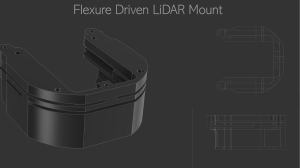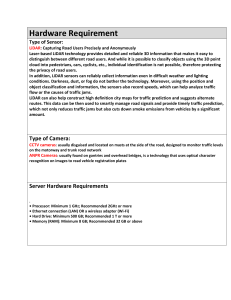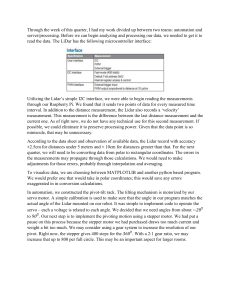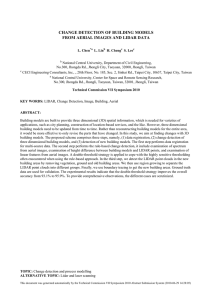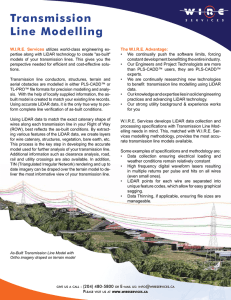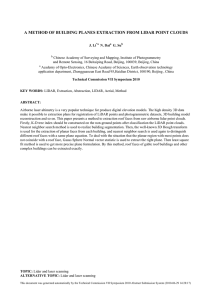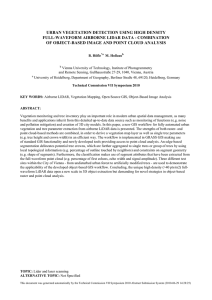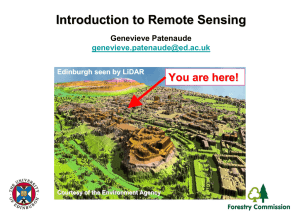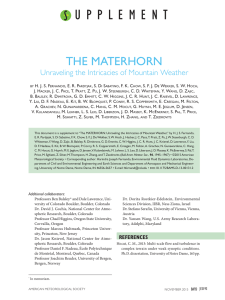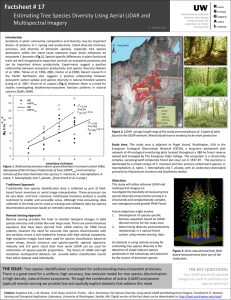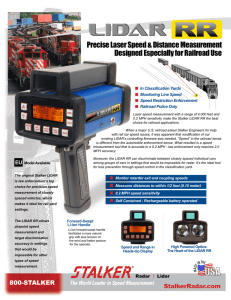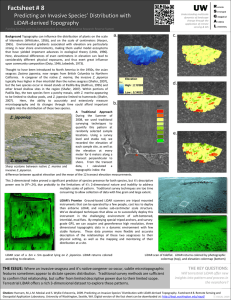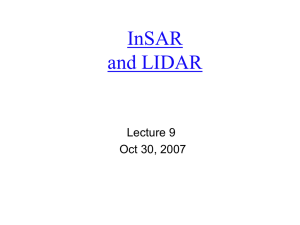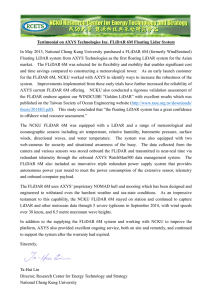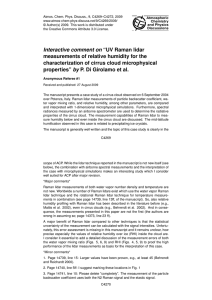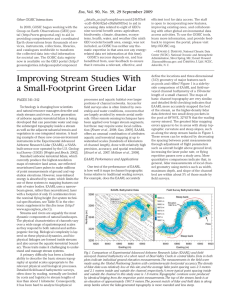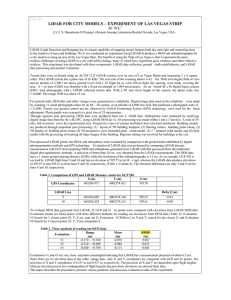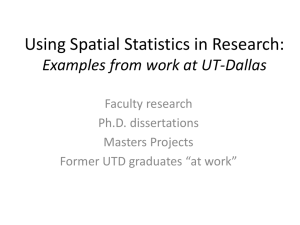DETAILED DIGITAL SURFACE MODEL (DSM) GENERATION, AUTOMATIC OBJECT
advertisement
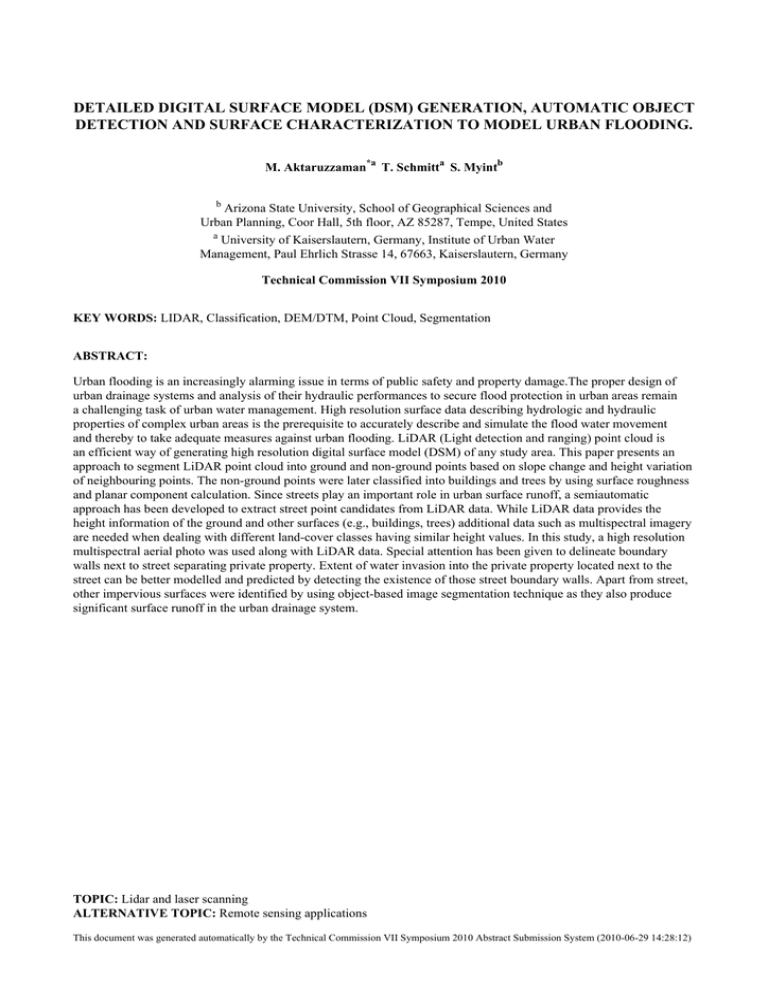
DETAILED DIGITAL SURFACE MODEL (DSM) GENERATION, AUTOMATIC OBJECT DETECTION AND SURFACE CHARACTERIZATION TO MODEL URBAN FLOODING. M. Aktaruzzaman*a T. Schmitta S. Myintb b Arizona State University, School of Geographical Sciences and Urban Planning, Coor Hall, 5th floor, AZ 85287, Tempe, United States a University of Kaiserslautern, Germany, Institute of Urban Water Management, Paul Ehrlich Strasse 14, 67663, Kaiserslautern, Germany Technical Commission VII Symposium 2010 KEY WORDS: LIDAR, Classification, DEM/DTM, Point Cloud, Segmentation ABSTRACT: Urban flooding is an increasingly alarming issue in terms of public safety and property damage.The proper design of urban drainage systems and analysis of their hydraulic performances to secure flood protection in urban areas remain a challenging task of urban water management. High resolution surface data describing hydrologic and hydraulic properties of complex urban areas is the prerequisite to accurately describe and simulate the flood water movement and thereby to take adequate measures against urban flooding. LiDAR (Light detection and ranging) point cloud is an efficient way of generating high resolution digital surface model (DSM) of any study area. This paper presents an approach to segment LiDAR point cloud into ground and non-ground points based on slope change and height variation of neighbouring points. The non-ground points were later classified into buildings and trees by using surface roughness and planar component calculation. Since streets play an important role in urban surface runoff, a semiautomatic approach has been developed to extract street point candidates from LiDAR data. While LiDAR data provides the height information of the ground and other surfaces (e.g., buildings, trees) additional data such as multispectral imagery are needed when dealing with different land-cover classes having similar height values. In this study, a high resolution multispectral aerial photo was used along with LiDAR data. Special attention has been given to delineate boundary walls next to street separating private property. Extent of water invasion into the private property located next to the street can be better modelled and predicted by detecting the existence of those street boundary walls. Apart from street, other impervious surfaces were identified by using object-based image segmentation technique as they also produce significant surface runoff in the urban drainage system. TOPIC: Lidar and laser scanning ALTERNATIVE TOPIC: Remote sensing applications This document was generated automatically by the Technical Commission VII Symposium 2010 Abstract Submission System (2010-06-29 14:28:12)
